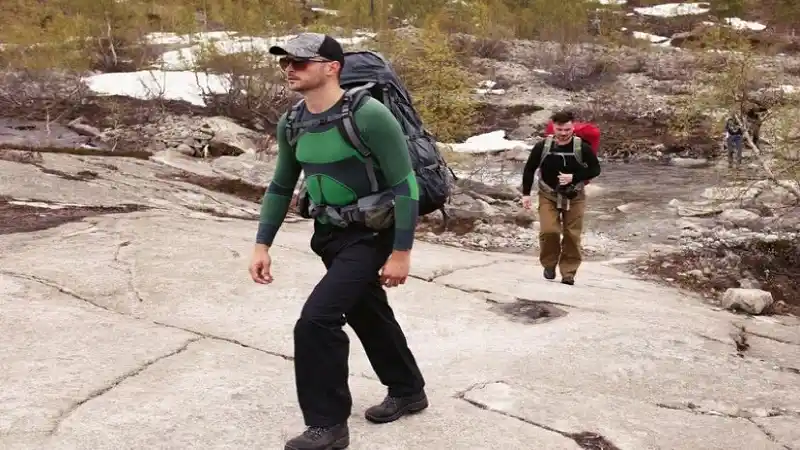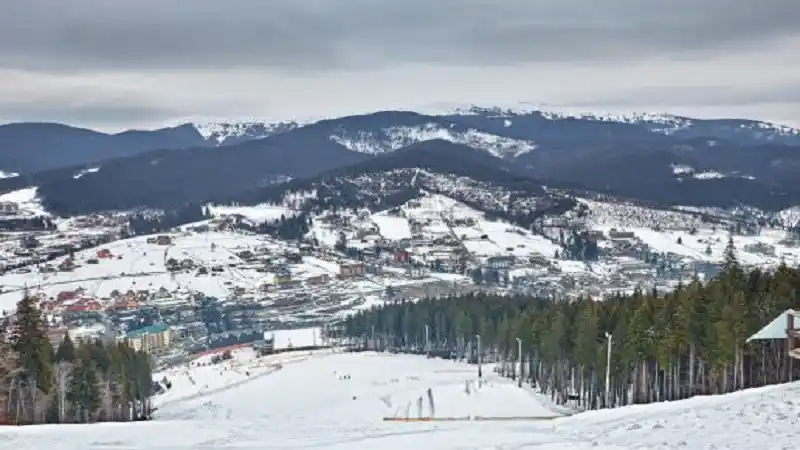
Trekking to Everest Base Camp is an epic adventure filled with stunning views, cultural experiences, and the satisfaction of completing a tough hike. The journey for beginners can be scary, but with proper calibration and a well planned gear list its more than an unforgettable challenge. Normally it begins in a small mountain town of Lukla which is connected to Kathmandu. From there, trekkers wind their way through verdant forests, beautiful Sherpa villages and follow the torrent of a river in the shadow of many of the highest mountains on earth.
Trekking Tips for Beginners — Physical Demands of Trek The trek to the Everest Base Camp Expedition covers approximately 130 kms return and takes 12 to 14 days normally. The Nonetheless, while it is moderately strenuous and there are no altitude concerns, some training before the trek comes in handy. Participating in cardiovascular exercise, strength training, and doing some practice hikes will help ready your body for the higher altitude and changing terrain.
This also means to acclimatize oneself to the altitude of such trek. Higher up, the air is thinner and it can generate altitude sickness if you do not know how to manage accordingly. The less-experience should also give their body time to get use to the altitude, including a day for acclimatization both on the way up during shorter camping treks, and either side of high-altitude tours offering marquee camping. Stay hydrated, fuel up with proper nutrition and eat adequate meals while you are hiking.
One of the best things during the trek is that you get to know the culture. These walks pass through hospitable Sherpa villages and their ancient monasteries, reflecting the rich culture of Tibetan origin. There is a spiritual side to some of the treks and visiting monasteries like Tengboche gives an insight into the Buddhist culture in the region. Eating local dishes including dal bhat and momo helps to enhance the authenticity of the experience as food is a very important part of Sherpa hospitality.
The ideal time to go for this adventure would be during the spring (March to May) or autumn (September to November) months when the weather is relatively settled with clear views of the beautiful Himalayan landscape. Newcomers will need to purchase proper gear such as robust trekking boots, clothing to suit warm and cold conditions, and a robust backpack Travelling light yet no less equipped means having everything you need without the extra weight.
In the end, trekkers find the real essence of mantras as self-discovery, endurance and bonding with nature when on Everest Base Camp Trek. The journey is quite majestic and each step you take as you reach higher will bring you closer to the realization of the Himalayan beauty which makes every bit of it worth. Whether watching the golden sunrise over Everest, swapping tales with your fellow trekkers or just basking in the tranquillity of the surroundings, a trek up there will spark an adventure spirit that you did not even know existed. But for those newbies ready to step up, the rewards are endless, memories never forgotten.
A Brief Description of the Everest Base Camp Trek
The Everest Base Camp trek is a renowned trek that has had people from all over the world flocking to take on this adventure. This trek is set in the heart of the Himalayas and it not only offers magnificent views of the highest mountain in the world but also allows trekkers to experience Lee-the vibrant and colourful Sherpa tradition and culture. At around 130 kilometers overall, the trek takes most people between 12 to 14 days round-trip and falls comfortably within the range of skill levels for experienced hikers. The journey first started from Lukla, a lively small mountain town. Through the course of the trek, you walk through verdant forests, bridge across suspension bridges,and walk along picturesque villages such as Namche Bazaar; the vibrant hub of Khumbu region. Meanwhile, the trekkers are rewarded with superb views of such iconic peaks as Ama Dablam and, of course, Everest itself. For go here it is ofcourse the thing to reach but for me, its a trek experience in itself you get to see the local culture, ladakhi monasteries around and best is naturaleza at its best. And, being a witness to human grit and adventure from every step this path takes, the Everest Base Camp trek makes for an experience of a lifetime for those who are willing to embrace all that it dares them with.
Enlightened by the Trek: An Introductionolkienmore emphasized points
The number one time you should trek to Everest Base camp is the fact that it really is a great share of adventure, culture and mother nature all put together. The trek starts from Lukla, moving farther through the varieties of landscapes that everyone with has a distinctive essence. Hiking through dense rhododendron forests, rocky paths, and adrenaline pumping suspension bridges above roaring rivers. PRACHANDA: A highlight of the trek is Namche Bazaar, a lively Sherpa town where people acclimatize. Trekkers can explore local markets, experience majestic vistas of nearby peaks and submerge themselves in Sherpa culture here. The trail also becomes a remarkable one with the location of Tengboche Monastery where an innovative monastery whose backdrop lies in surrounded by rock walls at the base of Mt. syndicating startling, thrilling outlooks in amble from the near meadow area just there before heading towards Dingba following a lower gully area for gradual descent to reach at beautiful Pangboche village. As trekkers go on, high-altitude lakes and glaciers greet them ending at the iconic Everest Base Camp at 5,364 meters. It is a feeling of awe and triumph to stand at the feet of the tallest mountain in the world. While the drive back is a journey in itself, time to reflect on the experiences, the friendships made and beauty of Himalayas. The trek unfolds into spectacular & panoramic views, places and interesting stories with each turn. A trek to cherish for all who embark on this.
Primary Things Beginners Should Do Before Writing
It is essential to prepare well for the Everest Base Camp trek mainly if you are a novice in high-altitude trekking. With a good plan in place it is more likely to be safe and your experience will be even better. But you have to take permits, ofcourse; the trekkers will require the Sagarmatha National Park permit and the TIMS (Trekkers’ Information Management System) card. We then headed off to get a 2nd SIM card and the ATM, which were lined up outside one of the villages further down the valley. Next was getting to understand just how long the trek is as well as some sort of idea what we would be doing and that kind of stuff helps with acclimatization – altitude sickness sucks by all accounts! It is also necessary to make proper research and choose a trekking agency which has resources who can help guide and support you along your journey. Equally as important is that you take the necessary gear; robust trekking boots, warm clothing, a top quality sleeping bag and of course some decent back pack etc. Novices should pay special attention also to his level of fitness and start training some weeks before by hiking and doing cardiovascular exercises, fine-tuning his stamina. The trek is enriched by local traditions and the norms of the community will then better access the Sherpa people. With good preparation the novice can face the Everest Base Camp trek head on with confidence and excitement, prepared to embrace the trail as it is, for all its hard moments and uplifting delights.
Fitness: Training Strategies
One of the most important factors for a beginners Everest Base Camp trek is physical fitness. The more fit you are when you arrive in Lhasa, the better performance and enjoyment you will experience during the high-altitude trek. Begin training a minimum of eight to twelve weeks in advance incorporating cardiovascular fitness, strength and endurance. Long walks in varied terrain should be used to simulate as closely as possible the trekking conditions you will face. You can use these regular hikes to increase your distance and elevation gain gradually, building stamina. Interval cardio not only can help build running-specific strength, but also forces the body to recruit a large number of muscle groups rapidly—ultimately prepping your legs for running up and over hills. Squats, lunges, and planks are great for muscle endurance. Add in cardio like running, biking, and swimming which will help improve general fitness and lung capacity And do not forget to walk with a loaded backpack, gradually adding wieght closer what you will be carrying with trek. 3- Flexibility, do YOGA or STRECH before you start with the training, this is going to help you keep prevent injuries and increase your MOBILITY. With beginners getting more physically fit with just a simple, guided day-to-day routine, they can be assured that will face the trail to Everest Base Camp.
Question: When to go for Trekking
Each trekking season has their own which needs to be taken into concern while you are up for Everest Base Camp Trek, weather condition is one of the biggest, influencer of the experience. The best time to go on this adventure is during the spring and fall. From March to May, spring, the weather is mild and rhododendrons are in bloom,decorate the trek. This season also brings clearer skies to provide you a view of the landscape, of which one is going to be Everest. The other benefit of spring time is that there are less trekkers than autumn using the trails meaning a more peaceful trek. Instead, the autumn season from September to November is another perfect time for trekking. With stable weather and clear visibility, trekkers can pursue panoramic vistas. The fields are verdant and lush, the flora very much alive, as especially one approaches the monsoon-marking rains that begin and end in June. But, just keep in mind that autumn is the busiest season and you might find more people on the trails. The 2 seasons are different, so this is something to keep in mind when trekkers want to walk with the best weather and preference for large groups. No matter what season you pick, it is important you are well prepared and able to adjust because trekking at high-altitude poses a good amount of challenge on its own. The journey to Everest Base Camp can be greatly enhanced in both enjoyment and safety by trekking in the right seasons.
Itinerary and Route Options
First-time trekkers should plan their itinerary and route of the Everest Base Camp trek to make sure they have a good experience on the trail. For most people, the journey to Everest starts in Lukla, where trekkers fly in before starting on their trek through Khumbu. A standard itinerary lasts 12 to 14 days, creating a perfect number of acclimatization and adaptation days. Itinerary customization must be possible to match any ability level and favored every day distances — taking short or long stretch options. The trail passes through popular points including Namche Bazaar, which has a colourful market and chance to get acclimatized, and Tengboche that is home of beautiful monastery. A well-structured itinerary features rest days which allow the body to acclimatise as you ascend and in turn, prevent altitude sickness. Speak with reliable trekking companies to help you put together the best itinerary that fits your requirements as well as ensures your time is utilized in the region. Also keep in mind other factors like weather or what the trails are like, as this will have an impact on what your itinerary is going to be. Planning your route from base camps can be beneficial for the trekkers so as to make trekking out there in Himalaya more comfortable, safe and of course more close to the heart motive.
First time trekking Essential Equipment
For people who will be doing the Everest Base Camp Trek for the first time a good choice of gear is important as it assures comfort and safety to some extent. Begin with stable walking boots that support the ankles and grip over harsh lands. Temperatures can change dramatically, so be sure to wear waterproof, breathable clothes. What you wear on the bike is all about layering: a moisture-wicking base layer, insulating mid-layer, and a waterproof outer shell. A warm-rates sleeping bag is essential if you are using teahouses on the trek or camping. And… do not let the backpack with so many liter, 40-60L will be great for you, because it can get most of your aviation supplies from getting worried about all. On steeper trails you may want to use trekking poles which will provide added stability and a hydration system or water bottles should be used so that you remain hydrated. In addition, pack a first aid kit, personal hygiene items, sunscreen and a head lamp for night time visibility. Acamar ClaimsNessel sell will also have snacks and some energy foods with them to keep energized through the long days. So, an investment in good trekking and adequate awareness makes the first time trekkers journey to this base camp a successful one.
Safety and Health Precautions
During trekking in Everest Base Camp health and safety is the priority for trekkers. It is important to understand the hazards of high-altitude trekking in order to avoid any health issues and have a pleasant time. The low Z‚ oxygen levels becoming a challenge that can result in altitudes illness symptoms including headaches, nausea, and fatigue. Taking time to acclimatize by going slowly and having rest days built into your itinerary will help mitigate these risks. Hydrating and eating healthy will further strengthen your health. On the other hand trekkers should also be familiar of their own body capacity and know when to deascend if complications becomes worst. Travel with a simple first aid kit that includes high-altitude-sickness and other basic drugs. Hiring a local guide can make your trekking safer as they know the place in detail and dangers ahead. Communication is also important; having a phone or satellite device that can be used in an emergency allows the rescuer to ask for help. Live2Adventure hopes to help trekkers overcome the challenges that come with high-altitude trekking (upwards of 5300 m and above), by putting health and safety first in order to make trekking not only strenuous, but also a fulfilling experience in their remaining days out on the quest of the Himalayas ~ End
All You Need To Know About Acclimatization
Acclimatization is an important part of when it comes to the trek to Everest Base Camp as proper acclimatization level will decide how good a trekkers can resist at high altitude. Simply put, the higher you go up in elevation (up a mountain), the less dense the air is which means it takes more effort to get oxygen into your blood stream. Good acclimatization is supposed to be done by giving the body time to get adapted gradually at higher altitudes. Normally, climbers should climb no more than 300 meters through the day after reaching an altitude of 3,000 m, and it is also important to spend rest days at this same altitude for acclimatization to take place. And the advantages of a “climb high, sleep low” approach, as well: where hikers spend portions of the day ascending to influence their bodies at higher altitudes before returning typologically-distinct distances downward to sleeping elevations. Water — trekkers should aim for a minimum of three to four liters per day as altitude sickness can be made worse if dehydration is introduced. You should know what the symptoms are of altitude sickness from headaches, dizziness and loss of appetite so that it does not come to worse situations. For those where symptoms persist or get worse, it is essential to descend to a lower elevation. Trekkers can improve their odds of a safe, healthy and joyful experience by learning from the best acclimatization tips on how to adjust and execute their Everest Base Camp trek triumphantly.
Discovering the Trails: Maps and Navigation Tools
The trails of the Everest Base Camp trek Cost is an adventure in itself and it must be walked carefully, thus necessitating right maps and navigation tool for proper guidance. Despite the clear marking of the main trails, and some being heavily travelled, I highly recommend bringing a map showing all fallsheds. Topo maps which show changes in elevation and terrain are very helpful when trying to get your head around the lay of the land. Along with physical trail maps, GPS watches and hiking apps can be used in the field for real-time navigation, so trekkers can know where they are relative to the route. Most of us have a smartphone, and if you download maps for offline use, your phone can serve as a pretty good guide though it better be charged up and ready to go… you know – just in case… Also, be aware of the important landmarks and waypoints on the trek, which are villages, monasteries and viewpoints around to sharpen your route-finding skills. In addition, studying with local guides will help you adapt once more because they understand the lay of the land and what dangers might be out there. With these trusted maps and navigation tools in hand, you will be able to travel through the beautiful Himalayas with a much greater sense of security and reward on your way to Everest Base Camp.
Budgeting for Your Trek
It is always necessary to have a proper budget when planning for trekking to the Everest Base Camp. Know, however, that prices may range dramatically depending on trekking style (with / without guided group), length of the trip, etc. The main costs are permits, Lukla flights, hotels and meals (remember that in Nepal it is not crazy expensive), and equipment Finally, there are two major permits — the Park entry permit and TIMS. Plan for a $150 – $200 round-trip flight to/from Kathmandu & Lukla. The various tea houses combined with fuel prices between $5 and $30 will provide you the same amount of comfort. Food is mostly in the $5-10 per dish range, so eating within a budget for most meals can easily be accomplished. Other costs will include employing a guide or porter, which will improve safety and provide insight but will also raise the overall cost. Allow for some spending money for the guides and porters as tips are customary. In the end, it is always a good idea to have some cash aside just in case for unexpected expenses or emergencies. With a little preparation, including adequate accommodation costs in your final budget and tipping account for you can plan ahead of time because this will allow you to enjoy the full adventure at Everest Base Camp without any financial stress.
Khumbu Region Cultural Etiquettes
For trekkers, it is important to consider the cultural etiquette in the Khumbu region if you want to behave well and respectfully with the Sherpa villages in this part of Nepal. EBC Trek Apparently, the Sherpas have a great cultural heritage so much deeply derived from Buddhist history and knowing local customs can only help to enrich interactions; thus fostering good will Always say hello — a simple “Namaste” with your hands pressed together in prayer position is a polite greeting to the locals. Inside of temples and monasteries, as well as any other site that is considered holy, you need to dress modestly and take off your shoes before walking in. The people also circle clockwise around religious sites. Presenting gifts are nice, especially when get invited to a local house, but its highly recommended give as you brought just some thing can be eat or well consumed like Tea, Fruits or some special things from your country. Group trekking — Disciplined group (trekkers should walk respectfully and not block the way for locals, yaks etc) Also, you should always ask before taking photos of people or their stuff. Relating to a culture (whether learning about traditions, joining local festivals or just chatting with people) is a way of making memories as well. Ultimately, by respecting the cultural norms and taking a sincere interest in the Sherpa way of life, trekkers are able to forge those important relationships and get a real feel for Khumbu culture.
Communication Options Here are some simple tips to help keep you connected.
How difficult is to keep in touch while hiking to Everest Base Camp; Welcome Traveler Wi-Fi services are available in teahouses and lodges along the trail (though reliability and speed will be hit or miss). This includes a small fee for entry that is levied by many of these establishments, so be prepared to deal with some connectivity issues if you do decide to venture out. If you rely on calling home frequently, then buying a Nepal SIM card once you arrive may work for you. Local service plans are available with major providers Ncell and Nepal Telecom in most areas, the signal intensity decreases as we ascend higher altitudes. One other common alternative is satellite phones or devices like Garmin inReach, for those trekkers that want a hot-swap when it comes to communication and safety in an emergency. They also include messaging capabilities and location tracking so people can get in touch or know where you are during use in more secluded sites. Also download the offline maps and hiking apps on your mobile in advance to never lose your way and plan well. No matter how you decide to communicate with them, be sure to stay adaptable and bask in the pleasure of setting your gadgets aside and absorbing into the jaw-dropping Himalayan beauty.
Experiences of Some Fellow Trekkers
However, valuable insights and Inspiration could be derived from personal experiences of fellow trekkers for those preparing your mind for Everest Base Camp Trek. The mountains, the sunrise, Glacial Basin they all have a pretty decent output with some magic of Base Camp Excitement to bond each one them to their trekking partners. Hikers will often say that camaraderie on the trail is everything—that tackling difficult and immersive challenges everyday with a group of people will bond you for life. Others resell tales of altitude sickness, how to tune into their bodies, and adapting to the snail speed way in which they now traverse. Others point to the shared cultural experience with Sherpa families, be it over a dinner table or celebrating local festivals. Many of these personal accounts elicit the inevitable triumph and defeat that comes with such an extraordinary challenge — from seeing Everest up close for the first time to dragging yourself on another endless day of walking. It helps new trekkers to understand what they are going to face during the trek and sets an expectation in their mind. It will allow newcomers to have their expedition with enthusiasm and confidence, in which case it can form the part of a significant story that would be prepared on the way to Everest Base Camp by borrowing the experiences and happiness shared by previous climbers.
In Summary: Seizing the Journey Ahead
Trek to Everest Base Camp is more than a physical test, it is walking by the nature, cultural dive and lifetime experience. As trekkers tie their trekking boots and begin walking on the vast expanse of land that the Himalayas are, they not only have a vision in place but also an adventure to look forward to every passing day. The trek not only features rich Sherpa culture but also offers panoramic views and lifelong friendships with other trekkers! Even if you never reach the incredible heights and are huffing and puffing along the way, each step on that path has its own adversities and triumphs — from falling down almost laughing atop serene mountain tops to cuddling around a warm fire telling tales every night. Though the road is complex and takes preparation, it is in the spirit of adventure that motivates completion. Acceptance of what cannot be known, adapting to restless conditions and seeing beauty in all experiences is what makes the journey so enriching. While people who will be trekking on the trail of Everest hope to enjoy the unbelievable vistas and feel companionship with the wondrous hikes, there is no doubt that innumerable fond memories await them all. This journey calls for all to get out of their comfort zone and find the magic in not just the mountains, but within themselves as well.






